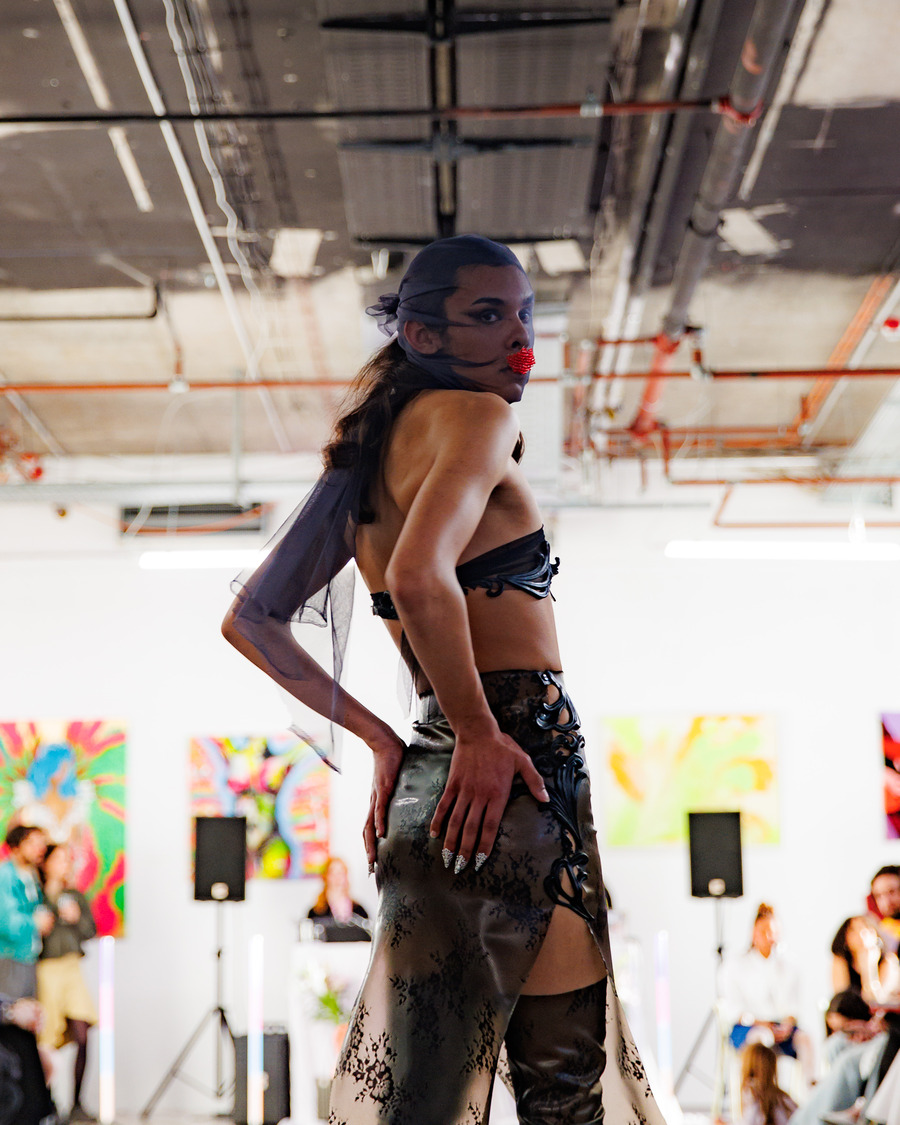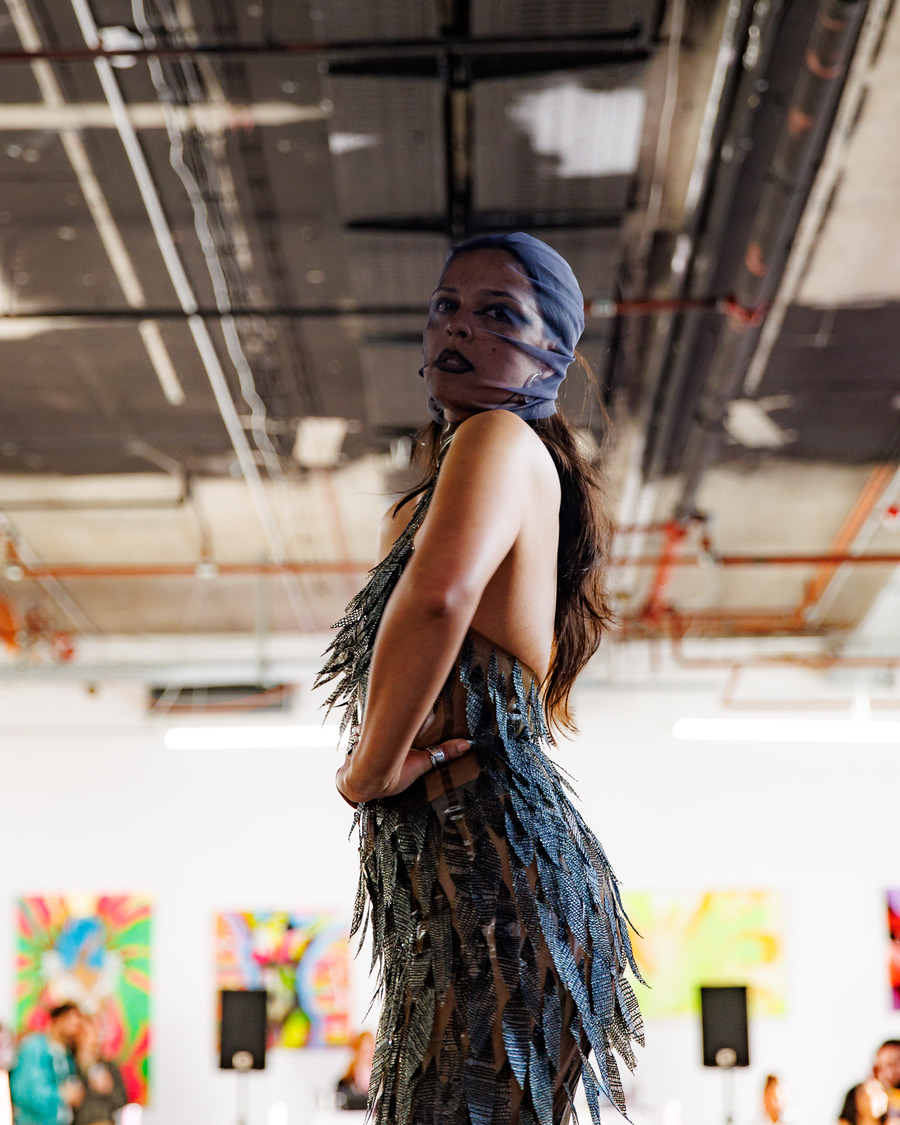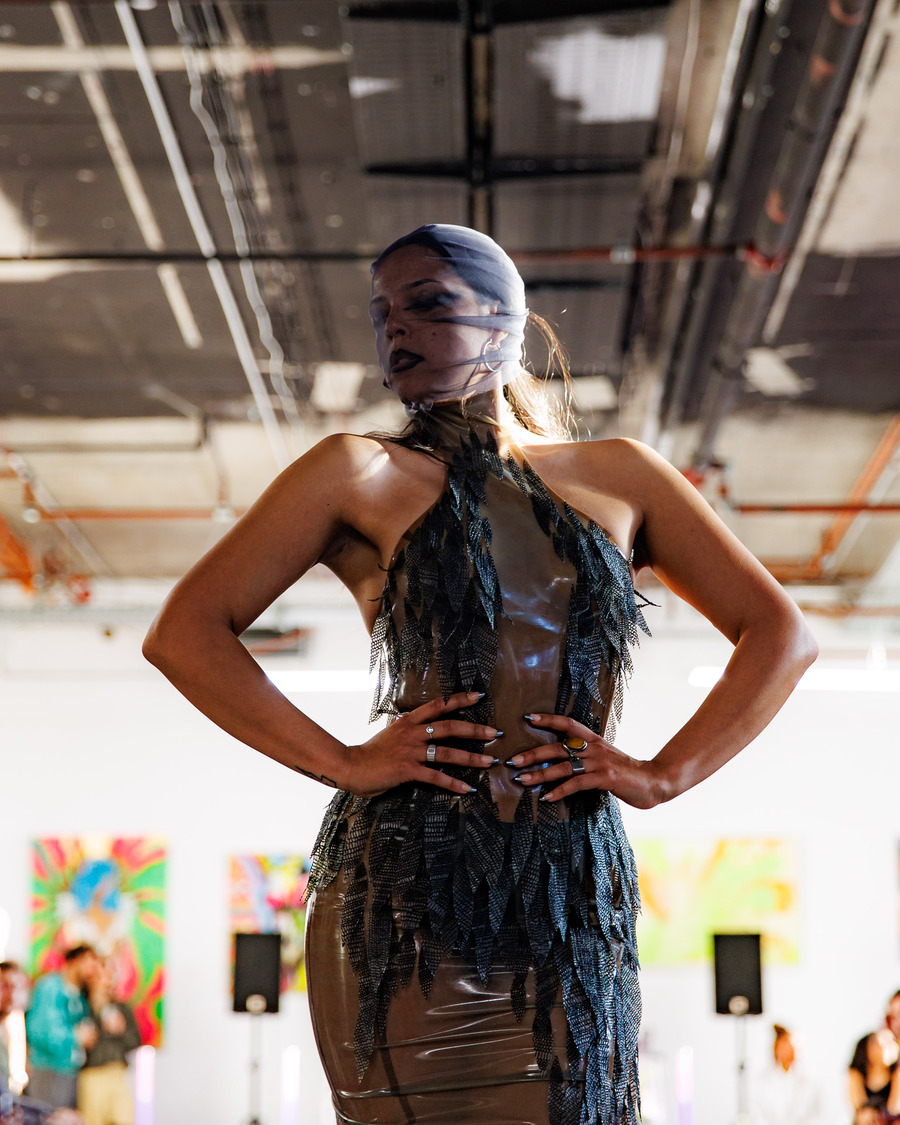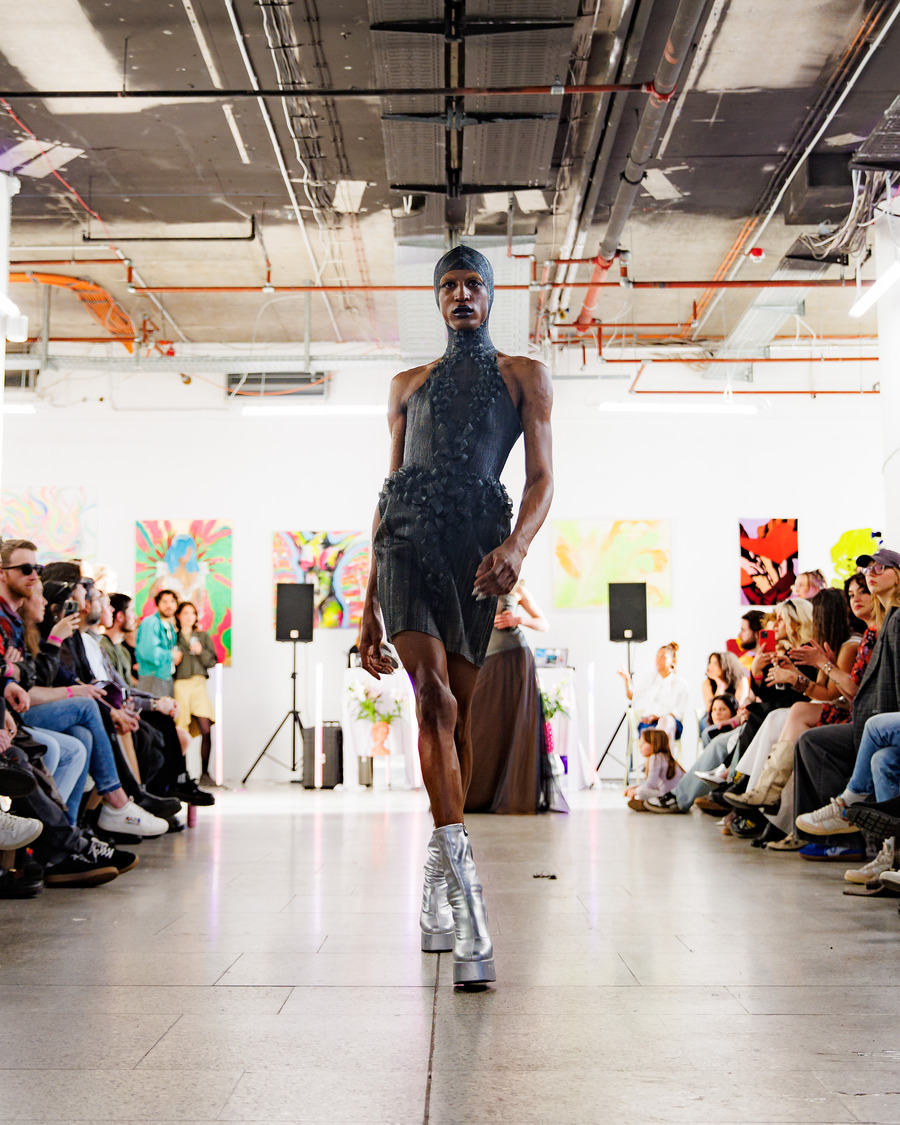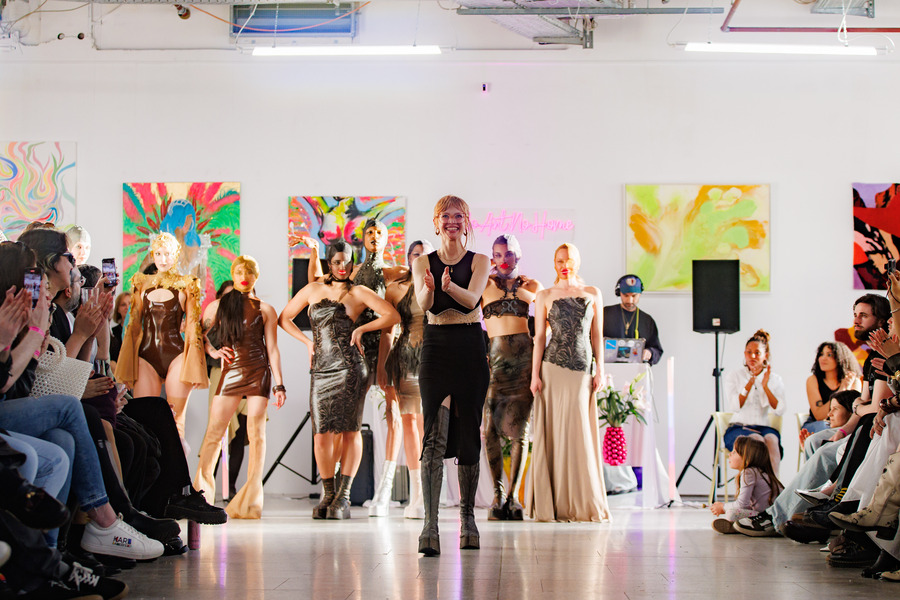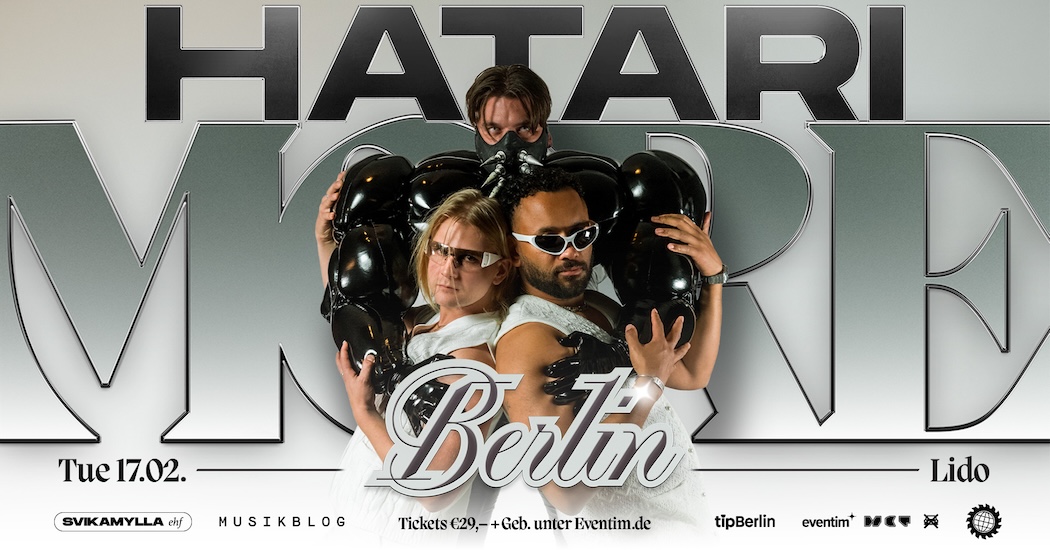
In a world where fashion often dances between excess and neglect, Maria Encke emerges as an avant-garde force, weaving narratives of sustainability, individuality, and artistic integrity into her striking body of work, Moth Couture. With an aesthetic inspired by the delicate beauty of moths, Encke’s designs challenge preconceived notions about latex, transforming a material often relegated to bold statements into a canvas of elegance and emotional resonance.
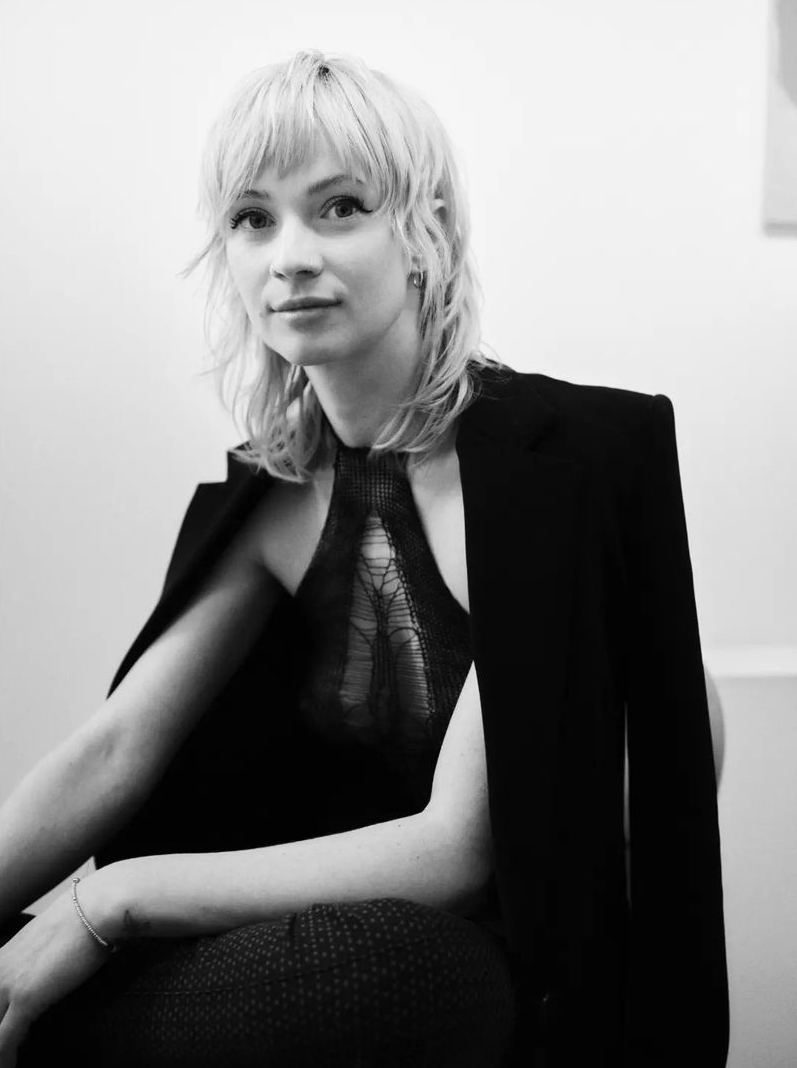
Her participation in “No Art No Home #5” marks a significant moment not just for her career but within Berlin’s flourishing artistic landscape. This interview offers a glimpse into Encke’s creative process—a kaleidoscope of intuition and chaos that births garments as expressive as they are wearable. Unafraid to confront the complexities of artistry and fashion, she embodies the theme “A Day of Unapologetic Creativity,” pushing beyond conventional boundaries to reveal deeper narratives of identity, sustainability, and exploration.
www.instagram.com/moth_couture //
Photos by @defrance.images and @sh1nfoto
Event @noartnohome
Gründer & Organisator @stelllaeleni Co-founder & Organisator @olivia.laurea Project Manager @la_rose_vit
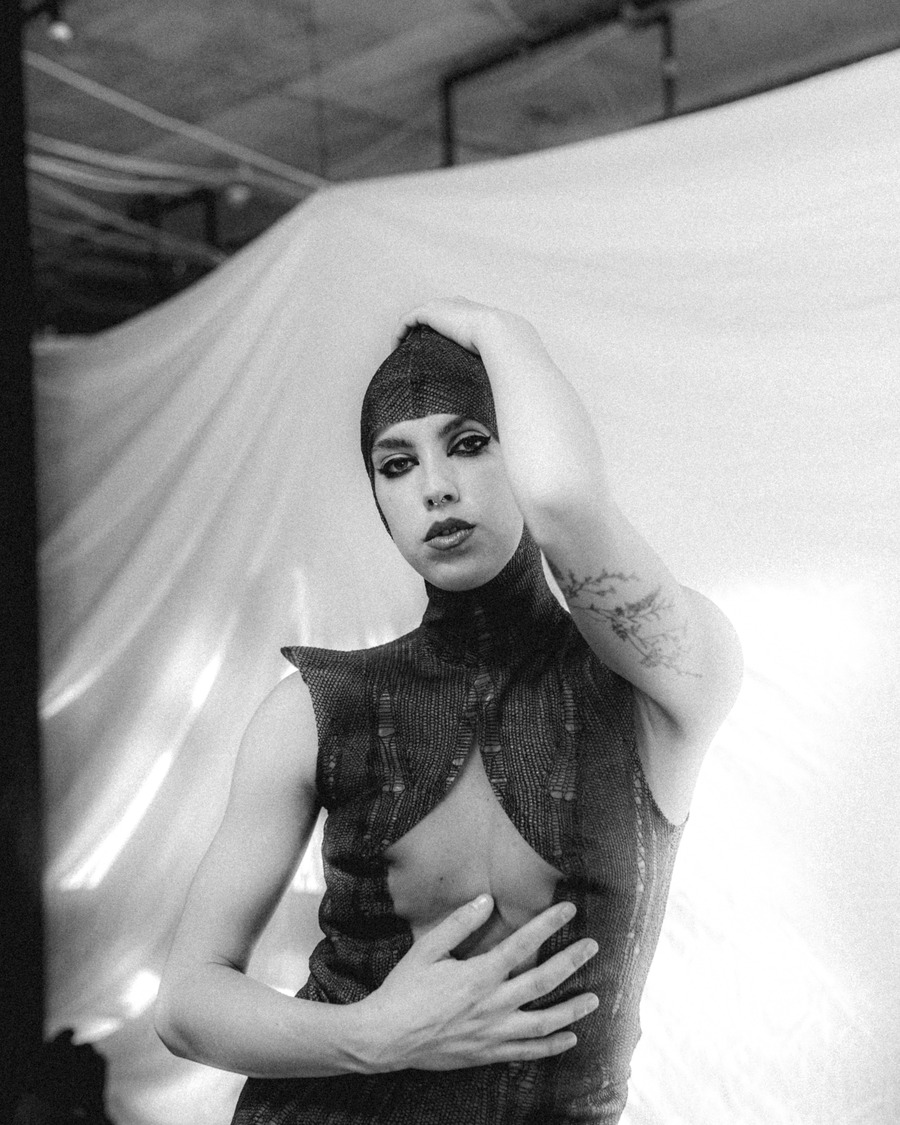
Join us as we delve into the mind of this innovative fashion artist, uncovering the emotional landscapes her collections inhabit, the messages stitched into her designs, and her vision for the future of fashion—a future that honours both the ephemeral beauty of the moth and the enduring nature of artistic expression.
What inspired you to take part in “No Art No Home #5,” and how do you perceive its significance within Berlin’s artistic landscape?
Participating in No Art No Home #5 was an intuitive decision for me because this format embodies exactly what my work is about: art that takes up space, challenges boundaries, and reveals alternative perspectives.
I’ve been following No Art No Home for a while and have seen it as a strong, independent platform – the perfect setting for my first show in Berlin. In a city where subculture, fashion, and art merge in such a vibrant way, No Art No Home makes a powerful statement for artistic freedom and creates space for authentic expression beyond the mainstream.
My fashion is expression, identity, and artistic attitude – it’s meant to be experienced, not just worn. That’s why I see this format as the ideal stage to share my vision: that fashion can be art, can be uncomfortable, can raise questions, and at the same time redefine beauty.
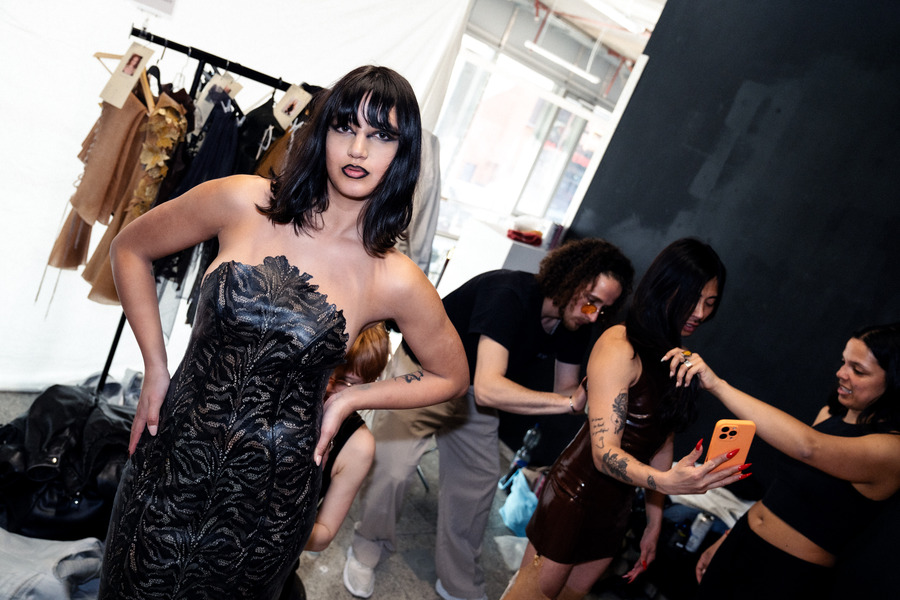
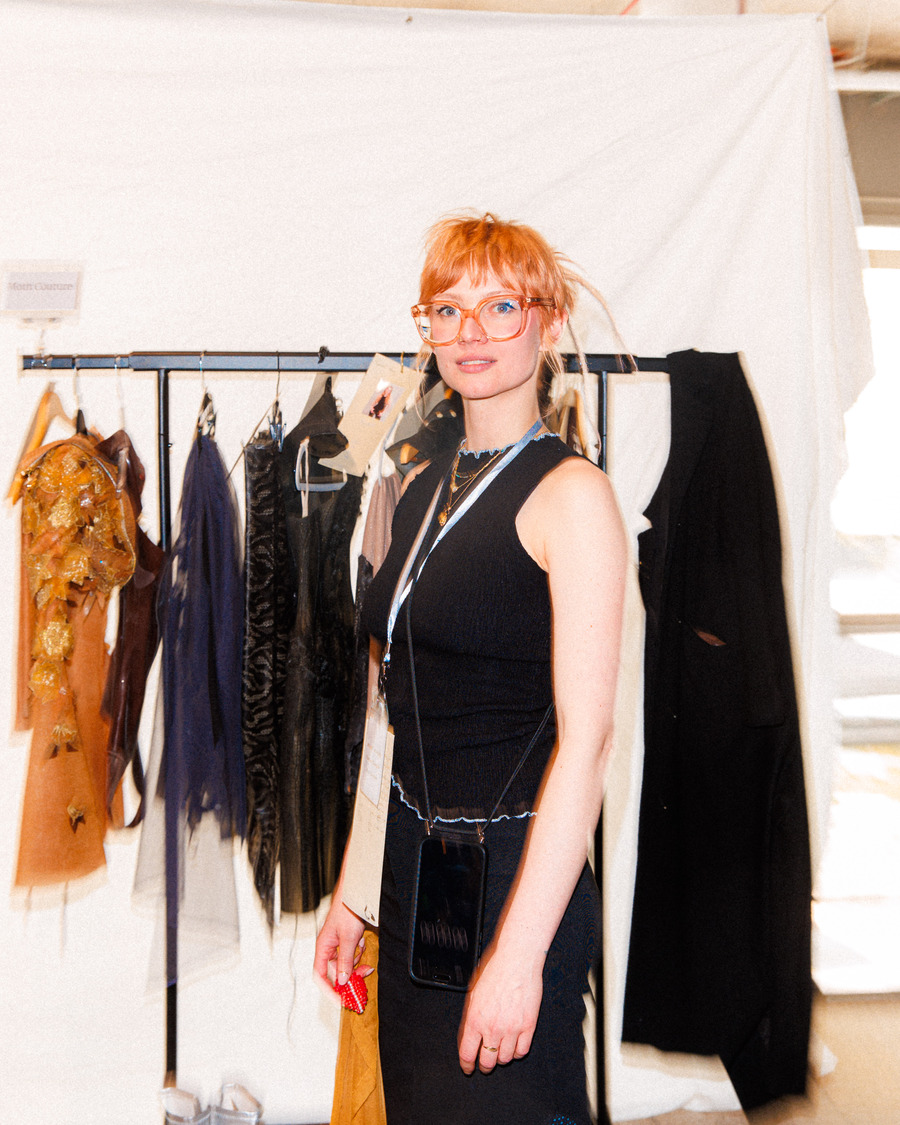
Can you describe the creative process behind your collection featured at this event?
My creative process often begins unexpectedly, with fleeting visions that suddenly enter my life. While cycling through the city, amidst everyday moments, or in my side job in the flower industry, where I am constantly surrounded by the ephemeral beauty of blooming forms.
From these moments, initial sketches emerge – often chaotic, sometimes useless, but never without purpose. Because in that very chaos lies the beginning of the experiment. In the studio begins the most exciting phase: I ask myself what is possible, how it can be possible, and most importantly, how I can push or completely erase boundaries.
With each step, the ideas become more tangible, the sketches more precise, the shapes more concrete. Then the production process begins – and with it a rush of adrenaline, joy, and devotion. In the end, a piece is created that not only takes form but also shows attitude, born from intuition, chaos, and a love for detail.
The theme “A Day of Unapologetic Creativity” suggests a bold approach to art and design. How does your work embody this theme?
The motto “A day of Unapologetic creativity” perfectly captures the essence of my approach. For me, it means fully embracing every moment, every idea, and every experience, without compromising the realisation of my vision. I make no compromises when it comes to embodying my aesthetic and my values. Each of my pieces is the result of intense dedication and an ongoing search for new ways to push the boundaries of art, fashion, and material. It’s not about what is common or expected; it’s about finding a form that authentically reflects my creativity, without regard for conventions.
The Daisy look was created through the combination of two seemingly contrasting materials. At the heart of it is the delicate lace knitting, which I create with my knitting machine, giving the design its intricate elegance. The second component is latex – a material often underestimated, which I aim to free from its usual associations and present in a new light.
The innovative fusion of latex and knitting results in a new textile that not only fascinates with its unique structure and appearance but also with its durability and resilience. This combination is a creative act that brings the two materials together in a new, distinctive way, bringing their individual qualities to life in an entirely new context.
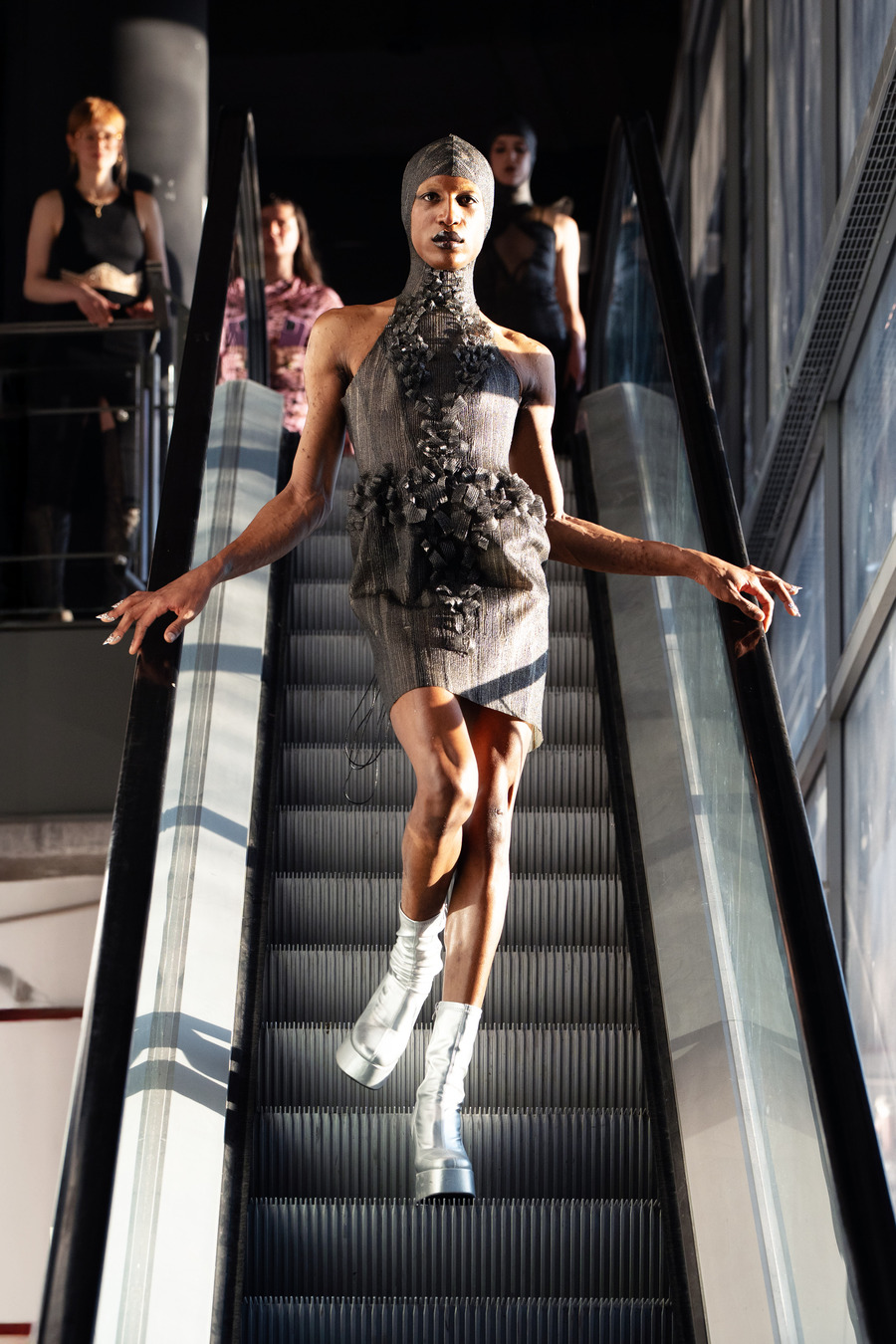
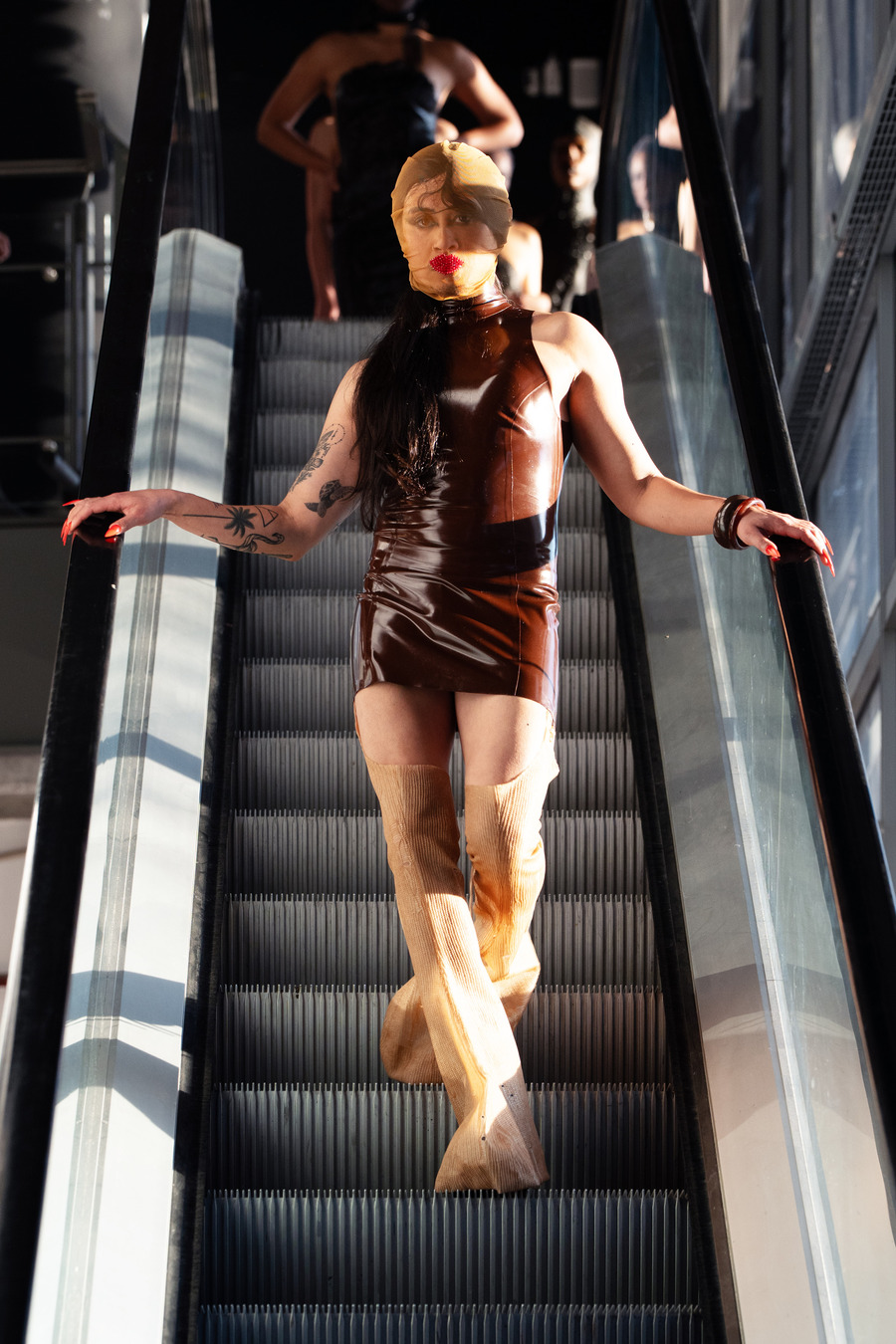
How does your heritage influence your designs, specifically within the context of sustainable fashion?
My heritage plays a significant role in my designs, as it inspires me to work with materials and techniques that are both timeless and sustainable. In my work, I constantly seek ways to merge tradition and innovation.
In the context of sustainable fashion, my heritage means creating an alternative to the fast-paced nature of the current fashion industry. It’s about crafting durable, thoughtful pieces that are not only aesthetically pleasing but also reflect ethical responsibility. The materials I use – like latex and lace knitting – are carefully chosen to minimise ecological impact, while still offering high quality and longevity.
For me, sustainable fashion means thinking beyond the moment and viewing fashion as an art form that lasts, one that honours the creative and cultural heritage that shapes us.
What emotions or messages do you hope to evoke with your collection, particularly with the use of iridescent masks?
With my collection, I aim to evoke emotions that deeply move the audience and also inspire thought. The use of shimmering masks plays a central role in this. They are not only an aesthetic element but also a symbol of the hidden and the unexplored. I want the audience to feel a sense of goosebumps when viewing the collection, as if they are part of something new and exciting. It’s about pushing the boundaries of the familiar and remaining open to the unknown.
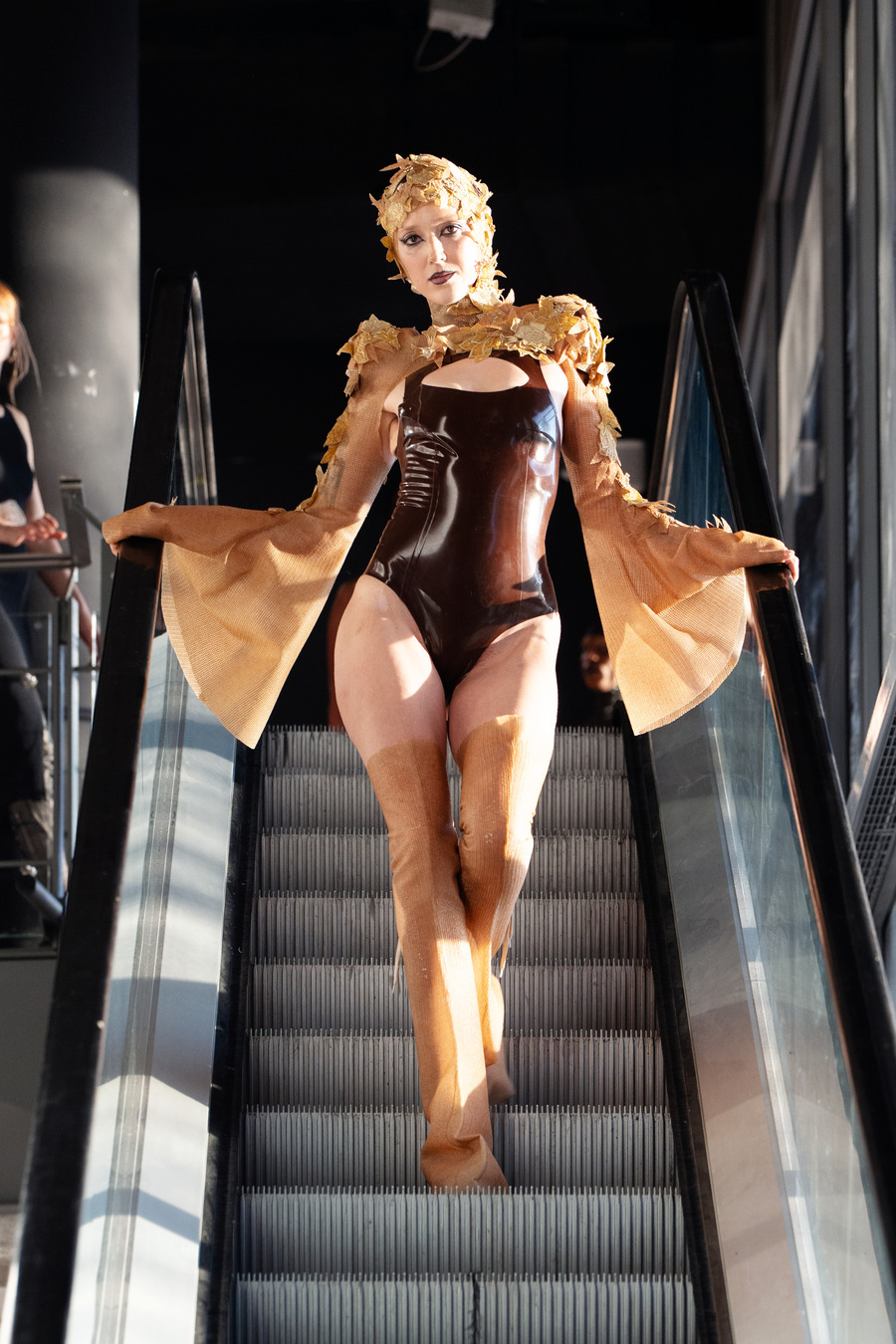
The phrase “We are the moths—drawn to the light of extinction parties” is quite striking. Can you elaborate on its meaning and how it relates to your work?
I think something has been mixed up here; this sentence is not mine and does not stand for Moth Couture.
How do you see the role of art in addressing issues around sustainability and environmental consciousness?
Art plays an incredibly important role in addressing issues of sustainability and environmental awareness. It has the unique ability to convey complex topics emotionally and visually that often goes deeper than words or numbers can.
Through art, we can not only recognise the impact of our actions on the environment but also feel it. It provides access to important issues and encourages us to reflect on our behaviour. In my work, I strive to combine sustainable practices with creative processes by choosing materials that are both aesthetically appealing and aligned with sustainable values. Art can move us to question our consumption habits, and it can raise awareness about the value of resources and the
need for a respectful relationship with nature. It challenges us to push the boundaries of the fashion industry and consumer behaviour, and to develop sustainable solutions that are both beautiful and functional.
Ultimately, art helps open a dialogue and inspires society to move toward a more sustainable and conscious future. It is a tool that not only entertains but also allows for a deeper engagement with the pressing questions of our time.
What has been the response to your collection from attendees of the event, and did it meet your expectations?
The response from the event participants to my collection was overwhelmingly positive. The feedback was truly wonderful, and it was great to see how people reacted to the designs. After New York and Paris Fashion Week at the end of last year, Berlin was another beautiful opportunity to present my collection to a wider audience. It wasn’t just another valuable experience, but also a fantastic opportunity to attract potential customers and make valuable connections.
Socialising and networking were just as important as showcasing the collection itself. I had the chance to meet many interesting and inspiring people, which made the event even more enriching. It wasn’t just a great professional experience, but also a really fun and open-minded atmosphere that fostered exchange and opened up many new perspectives.
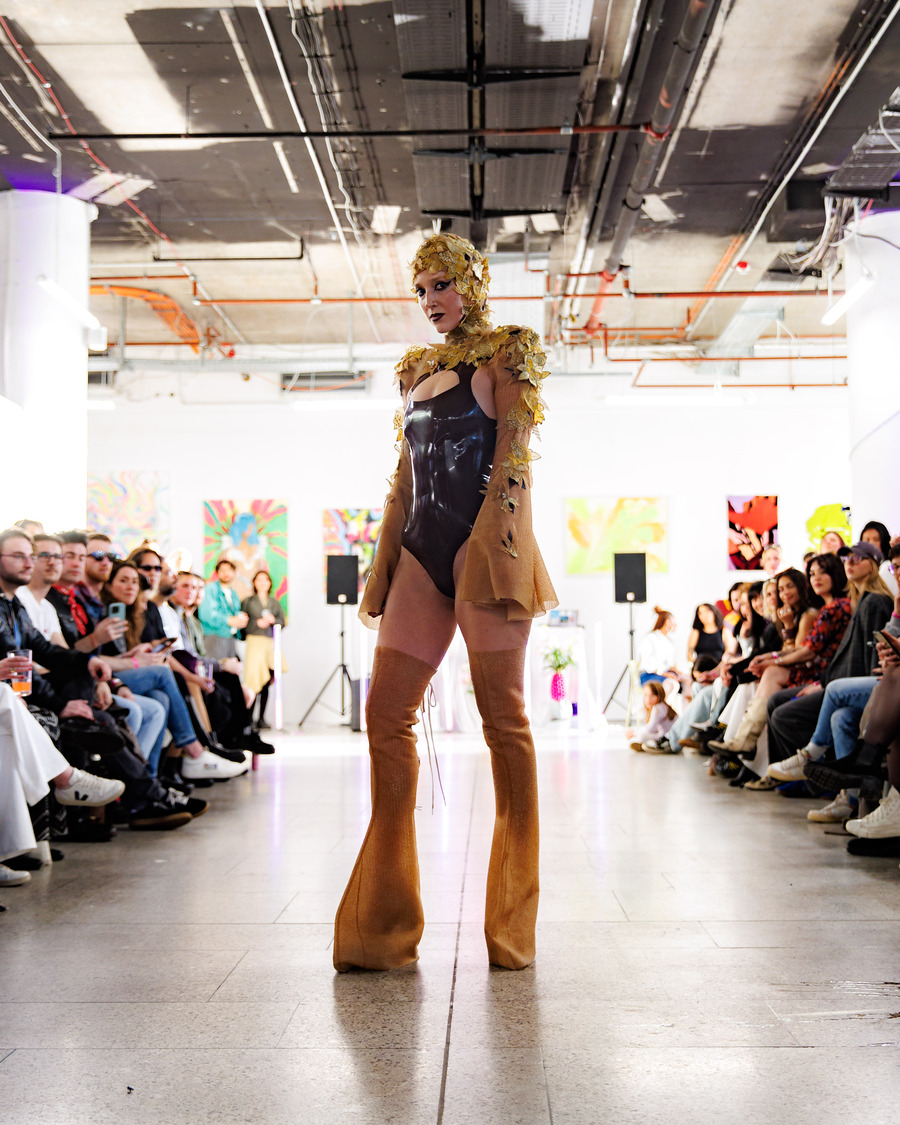
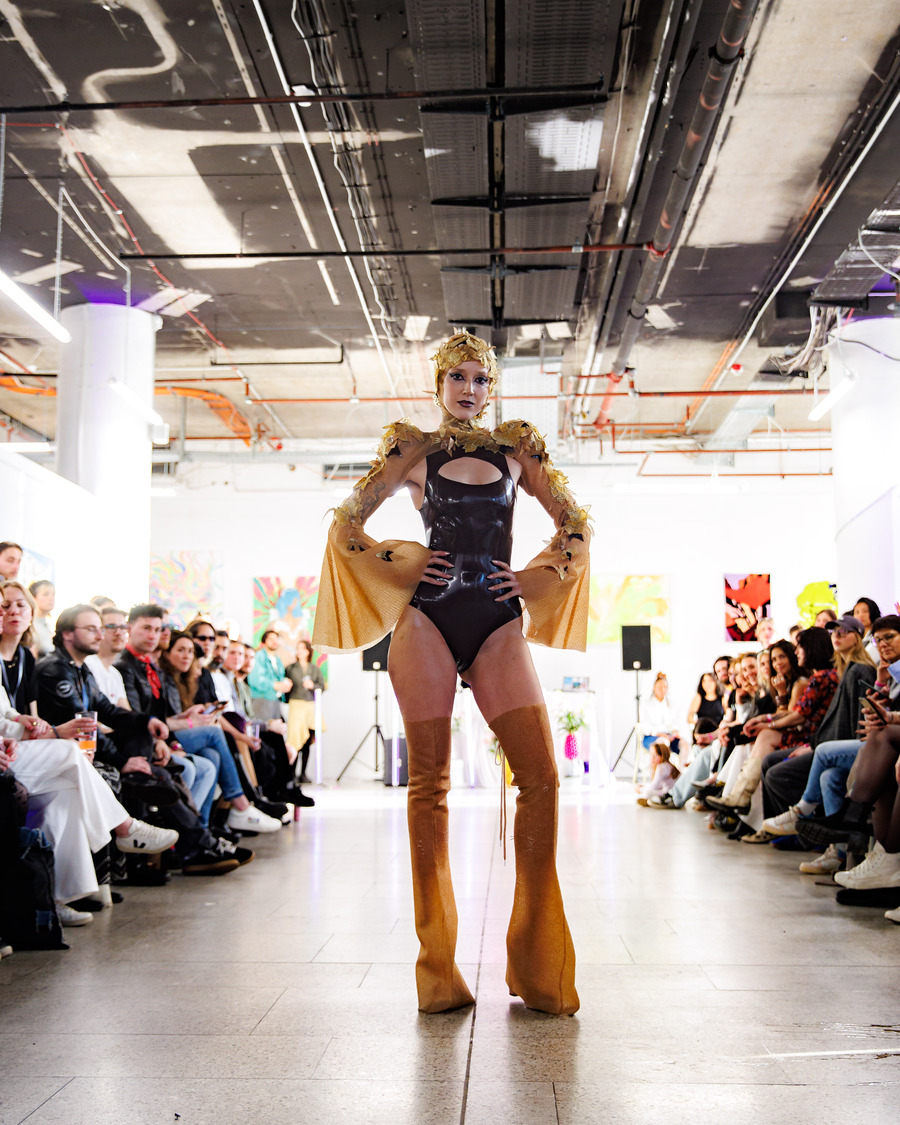
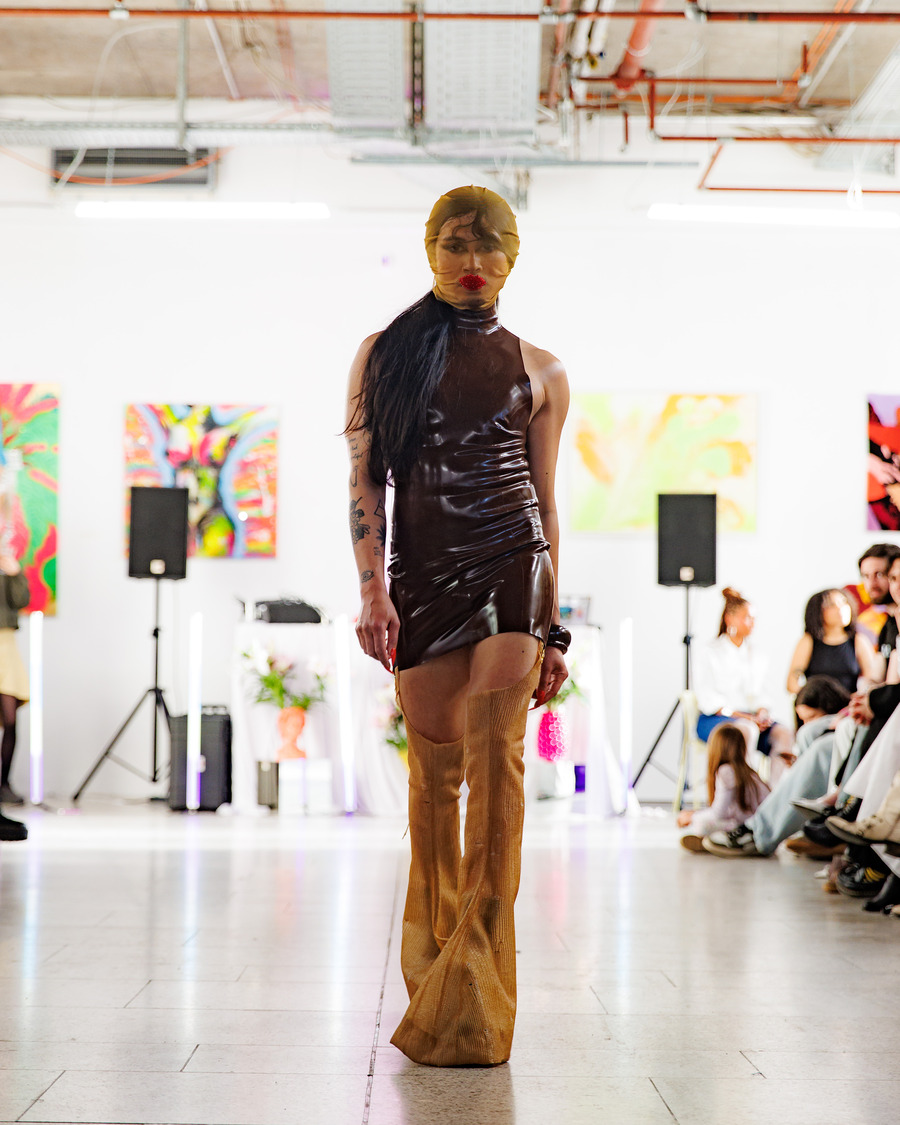
Can you share a specific moment or interaction from the event that stood out to you?
A moment that particularly stands out to me was when I walked down the runway after my models and realised for the first time how many people were in the audience. The moment when I saw the excitement and amazement on the faces of the spectators was incredibly beautiful and moving. It was that moment when I truly felt that all the hard work and creative energy put into the collection had been received.
The positive response and visible enthusiasm of the audience made the whole moment something special. In addition, working with No Art No Home was incredibly easy and enjoyable. The communication was straightforward, friendly, and open – it was truly a pleasure to collaborate with such a professional team.
It’s wonderful to know that there are platforms like this for artists, offering us a stage to showcase and share our work.
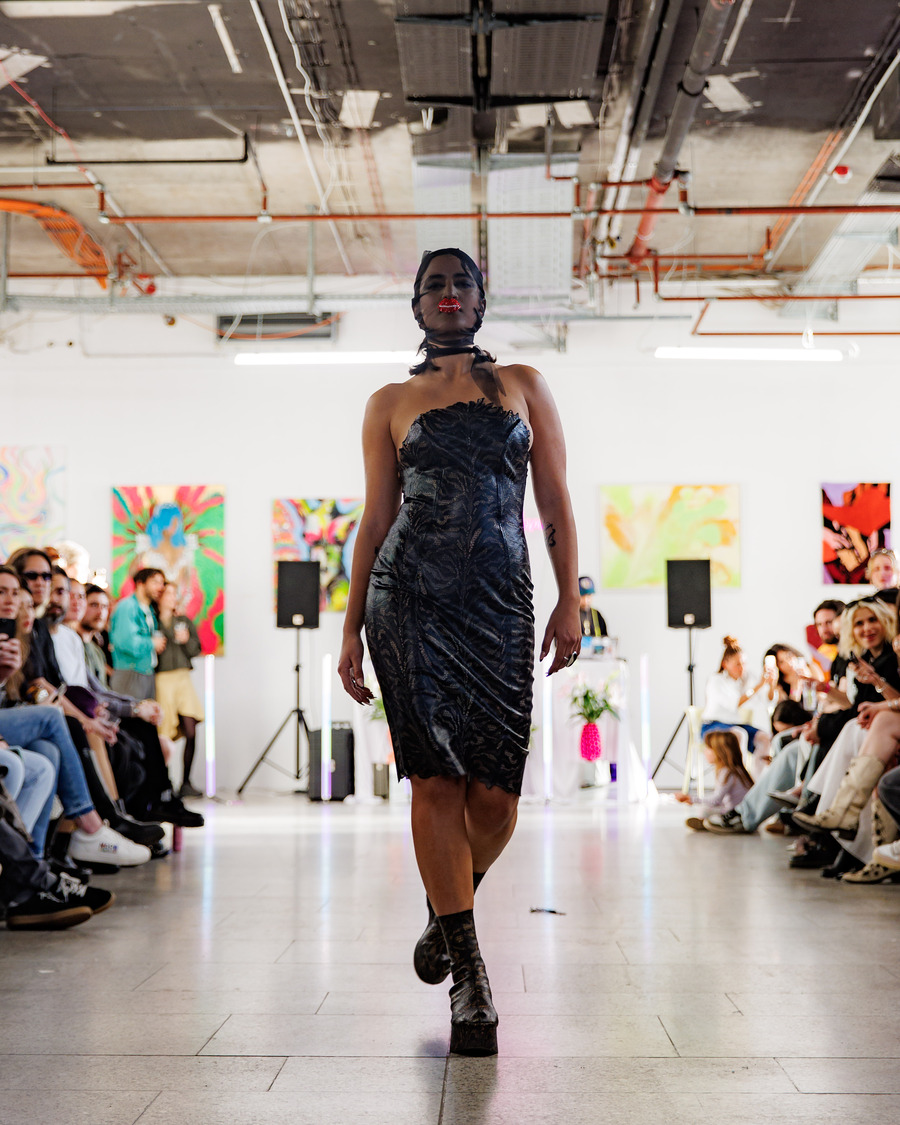
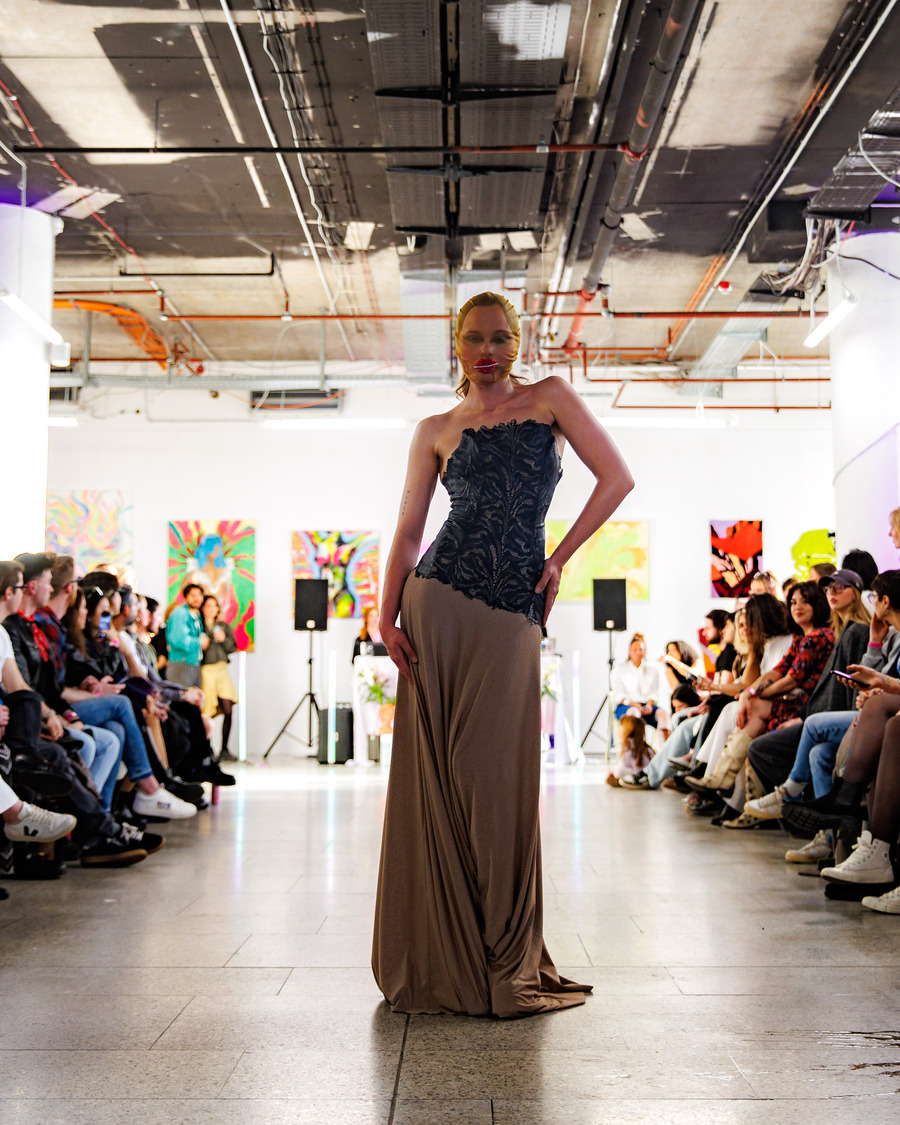
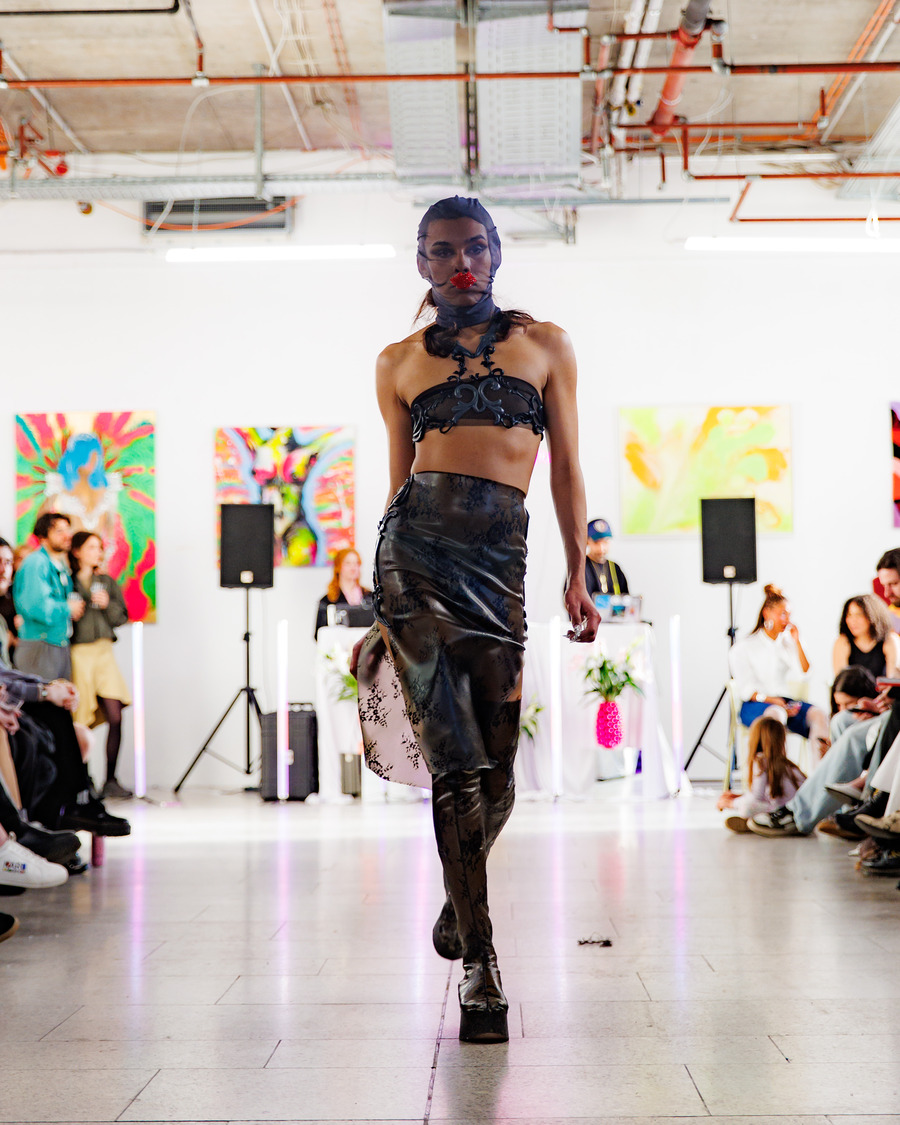
As a designer, how do you balance creativity with the practical aspects of garment production, especially in using recycled materials?
As a designer, it’s an ongoing challenge for me to balance creative vision with the practical demands of garment production. Every collection begins with an artistic impulse – an idea that aims to push boundaries and create something new. But fashion doesn’t end with aesthetics: functionality and wearability must also be carefully considered.
A simple example is the freedom of movement in a tight dress. It’s about allowing enough flexibility without compromising the intended silhouette. Sometimes, this means that fashion can be uncomfortable if it serves the expression. It’s precisely this tension between comfort and creative intent that makes the design process so compelling.
Garment care is another essential aspect of my work. From the beginning of production, I pay close attention to choosing materials and techniques that ensure ease of care and long-lasting quality.
At the same time, I communicate to my customers: these are special pieces that require mindful handling, because only with proper care can their quality truly endure.
Where do you see Moth-Couture evolving in the future, and what other themes or concepts are you eager to explore?
I see the future of Moth-Couture as a continuous evolution of my artistic identity, to become even bolder, more experimental, and more conceptual. I want to keep breaking down the boundaries between fashion, art, and performance, creating spaces where garments are more than wearable objects – they become emotional, visual, and societal statements. I’m particularly drawn to themes like identity, transformation, and body perception. I want to explore how clothing shapes our awareness and how materials, silhouettes, or masks can function as extensions of the self. Sustainability will also remain a key element, both in terms of material choices and conscious production practices.
In the long term, my vision is to go beyond presenting collections and instead create entire experiences – installations, interdisciplinary collaborations, and shows that engage all the senses. Moth-Couture should always be allowed to shed its skin, just like the moth that originally inspired me.
